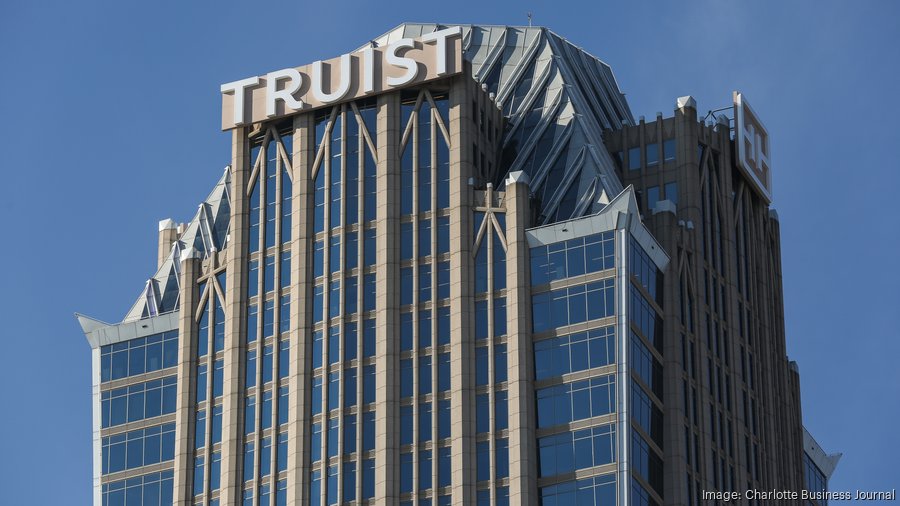Listen to this article 3 min
Truist Financial Corp. and Wells Fargo & Co. disclosed mixed plans for dividends in the third quarter, while Bank of America has not yet revealed how it will proceed, following results last week of the Federal Reserve's latest stress test. All 23 of the nation's biggest U.S. lenders passed the test, including Charlotte's three largest banks.
Charlotte-based Truist (NYSE: TFC) said June 30 it will keep its quarterly common stock dividend at 52 cents per share in the third quarter, subject to board approval.
Bill Rogers, CEO and chairman at Truist, said the bank's stress test results reflect its "diverse business mix" and diligent risk-management approach.
"Our strong liquidity and capital positions, bolstered by the approximately 30 basis point increase to our (common equity tier 1) ratio from the minority stake sale of Truist Insurance Holdings that was completed after the start of the 2023 annual stress test exercise, provided us significant capacity to serve our clients and stakeholders, maintain a strong dividend for our shareholders, and ultimately help us deliver on our purpose to inspire and build better lives and communities," he said in a statement.
San Francisco-based Wells Fargo (NYSE: WFC), Charlotte’s third-largest bank, said it plans to increase its third-quarter dividend to 35 cents per share from 30 cents per share, subject to board approval. Wells Fargo was among five banking giants, including Goldman Sachs and JPMorgan, to announce plans to boost their dividend.
"This year’s (Comprehensive Capital Analysis and Review) stress test affirmed that Wells Fargo remains in a strong capital position, reflecting the value of our franchise and benefits of our operating model,” CEO Charlie Scharf said. “This capital strength allows us to serve our customers’ financial needs, while continuing to prudently return excess capital to our shareholders.”
Charlotte-based Bank of America has yet to reveal if there will be any updates to its dividend plans. In April, it announced its quarterly common stock dividend was at 22 cents per share.
BofA said in a news release today it has "initiated dialogue with the Federal Reserve to understand differences in other comprehensive income over the 9-quarter stress period between the Federal Reserve’s CCAR results and Bank of America’s Dodd-Frank Act stress test results."
It appears unlikely the bank will announce plans to boost dividends or buy back stock until it holds those further conversations, according to the Wall Street Journal.
The Fed released results on June 28 from its annual stress test. It has conducted those tests for over a decade, implemented as the industry clawed its way out of the financial crisis. The tests help ensure banks are ready to weather economic downturns and highlight weaknesses in their capital plans.
The Fed's scenario to test the banks included a "severe global recession" with the U.S. unemployment rate jumping to 10% and commercial real estate prices dropping by about 40%. A significant rise in office vacancies and a 38% decline in home prices were other factors considered.
Under this type of duress, the 23 tested banks were projected to face $541 billion in total losses while continuing to lend, according to the Fed's data. That total was driven by about $424 billion in estimated loan losses.
The banks, in general, stayed well-capitalized despite the significant losses. The Fed said last week the results illustrated that big banks can weather a severe recession and continue lending to households and businesses.
Truist and Wells Fargo are planning for a 2.9% capital buffer, which refers to extra capital required by regulators to ensure a more resilient banking system. The minimum requirement is 2.5%.
It is unclear yet if financial institutions will remain cautious with their capital plans after the collapse of three small to midsized banks this year.
June 2022 local deposits
| Rank | Prior Rank | Business name |
|---|---|---|
1 | 1 | Bank of America Corp. |
2 | 2 | Truist Financial Corp. |
3 | 3 | Wells Fargo & Co. |
